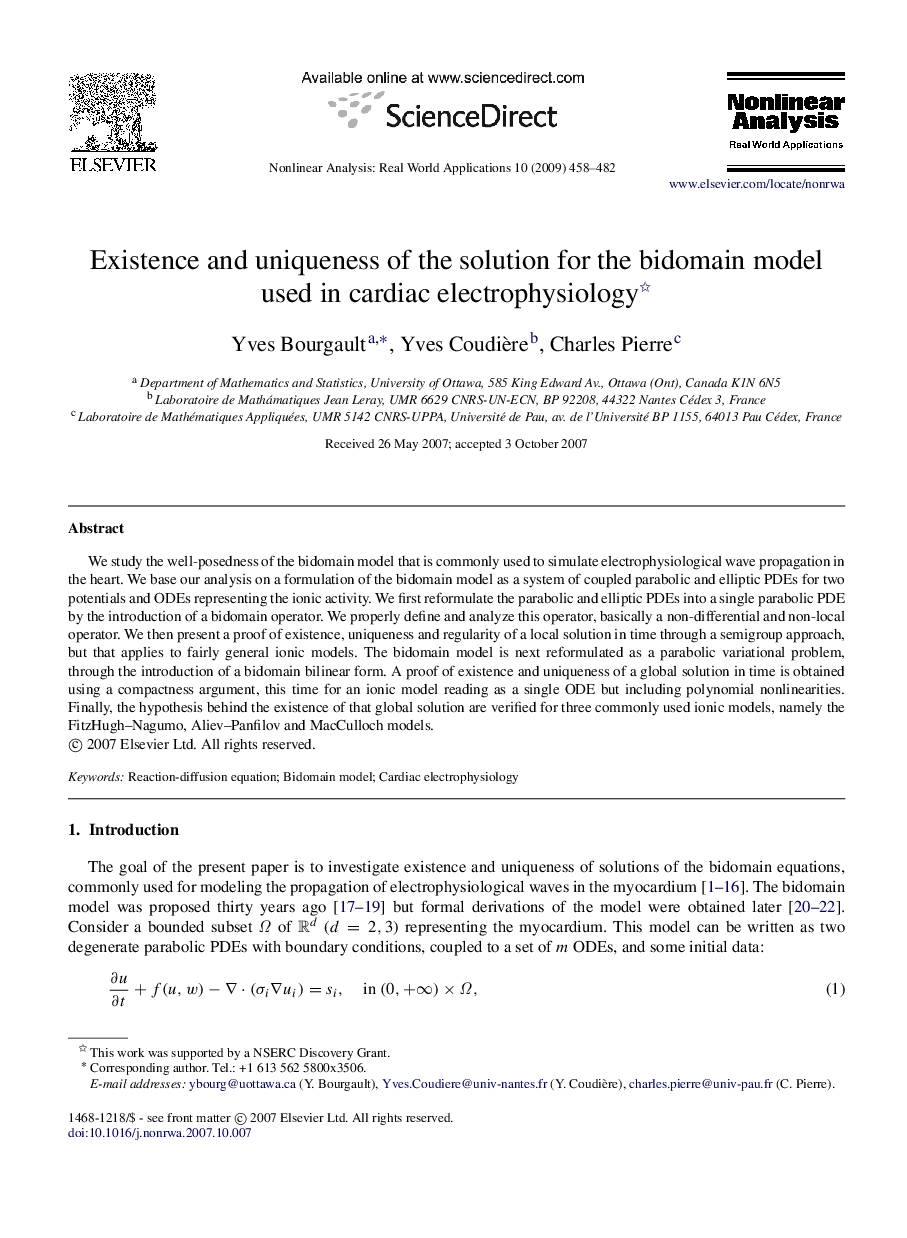| Article ID | Journal | Published Year | Pages | File Type |
|---|---|---|---|---|
| 838564 | Nonlinear Analysis: Real World Applications | 2009 | 25 Pages |
We study the well-posedness of the bidomain model that is commonly used to simulate electrophysiological wave propagation in the heart. We base our analysis on a formulation of the bidomain model as a system of coupled parabolic and elliptic PDEs for two potentials and ODEs representing the ionic activity. We first reformulate the parabolic and elliptic PDEs into a single parabolic PDE by the introduction of a bidomain operator. We properly define and analyze this operator, basically a non-differential and non-local operator. We then present a proof of existence, uniqueness and regularity of a local solution in time through a semigroup approach, but that applies to fairly general ionic models. The bidomain model is next reformulated as a parabolic variational problem, through the introduction of a bidomain bilinear form. A proof of existence and uniqueness of a global solution in time is obtained using a compactness argument, this time for an ionic model reading as a single ODE but including polynomial nonlinearities. Finally, the hypothesis behind the existence of that global solution are verified for three commonly used ionic models, namely the FitzHugh–Nagumo, Aliev–Panfilov and MacCulloch models.
